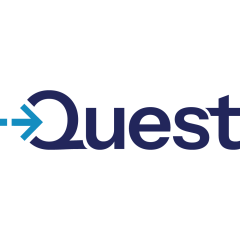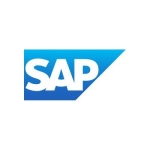
erwin Data Modeler Primary Use Case
Currently, I am an end-user of erwin Data Modeler, working as a full-time employee at TCS, not as a consultant. I interact with business customers and convert those concepts to developers. I occupy a middle position between the business and the developers.
My usual use cases for erwin Data Modeler involve converting the entire model from scratch, starting from the business concept through the conceptual model, logical model, and physical model. I handle relationship creation as well as subject area creation, and I perform all of these tasks in erwin Data Modeler.
View full review »I work for CVS with a pretty big database as a data modeler on the PBMs, the Caremark PBM side, which is the Pharmacy Benefits Manager. There's a retail side too for all the stores, but our data warehouse is for the PBM side of the business. Right now I'm working on moving all of our Teradata tables over to the cloud. We're redoing all the DDL from Teradata to BigQuery to GCP format, and we're rebuilding erwin Data Modeler files. As we're doing that, we're creating new erwin Data Modeler files in the GCP format for all the tables that we're migrating as we move them over. It's our only data modeling tool, so we use it for everything that we need it for.
I've used erwin Data Modeler for three major platforms: Oracle, Teradata, and now the cloud. I've never used it for a non-SQL database, just those three, and it works great for all three of them. I have another meeting right after this to talk about trying to get the next version of erwin Data Modeler, version 15, because I was told by someone at Quest that that one has full GCP BigQuery support. Right now, the version that we're using, 12.5, has support but it's not complete. There are some features that it's lacking, so I'm anxious to get the next version. Hopefully, this call will expedite that so that we can get a newer version of it that has more support for BigQuery. I've also used it to import Oracle SQL, Oracle DDL, and Teradata DDL, and then used a feature to convert that to GCP format, and that works pretty great. There are some things that it drops, but we have a workaround to get those things back, and I'll bet version 15 probably fixes some of that. But as far as it being able to work with those three database platforms and convert between them, it works really good.
View full review »My use case for erwin Data Modeler is to identify the objects and keep the business details and object details into one pictorial diagram. Whenever a business wants to understand their operations, it is easy to walk through them with the PDF we have generated, which includes the links between the objects and functionality of the business and description of each column with business context. This tool is helpful for storing all this information.
View full review »Buyer's Guide
erwin Data Modeler
January 2026
Learn what your peers think about erwin Data Modeler. Get advice and tips from experienced pros sharing their opinions. Updated: January 2026.
880,435 professionals have used our research since 2012.
YJ
Yang Jiao
Senior Data Scientist at a consultancy with 10,001+ employees
I use erwin Data Modeler as the modeler, utilizing the desktop version to develop and design tables, determining which attributes belong to which tables and designing their relationships. Another software developed by Quest, called erwin 360, is a public version that allows my leaders to view the models I created on a webpage, review my work, and give feedback. This is the main use case in our work.
View full review »
I used erwin Data Modeler for approximately two to three years on a project. I used erwin Data Modeler for multi-level data modeling, conducting conceptual, logical, and physical data modeling within it. Conceptual modeling involved high-level entities and business terms and relationships. Logical data modeling included normalization and attribute-level specifications, as well as business rules. Physical data modeling involved data types, database-specific constructs, and schemas. erwin Data Modeler's ability to maintain model-to-model traceability is one of the biggest strengths.
View full review »
AW
Anthony Woods
Data Architect at a energy/utilities company with 10,001+ employees
I have used Erwin for the last 20 to 30 years. As a data architect, I primarily use the data modelling tool. The MODEL MART functionality offers version control.
View full review »erwin Data Modeler is primarily used for data modeling, including logical data modeling, physical data modeling, and conceptual data modeling.
View full review »We are implementing erwin to streamline data modeling and automate network changes for increased efficiency and comprehensive data development. This option simplifies the need for better data indexing.
View full review »WO
William O'Shea
Data Architect at a energy/utilities company with 10,001+ employees
I am using the solution for data modeling. We also use erwin Data Intelligence Suite for data governance.
View full review »DS
Denise Smallwood
Data Architect at a real estate/law firm with 1,001-5,000 employees
I use erwin Data Modeler for a metadata project. I don't have thousands of tables to manage or a data warehouse or anything.
View full review »We use erwin Data Model to create logical and physical data models.
View full review »Our primary use is for doing database designs on just about any platform. The main users are dedicated data architects, while we also have development team staff using the tools to review models. Additionally, our database admins access the solution for implementing the Data Definition Language (DDL).
View full review »We use the solution for data modeling.
View full review »I use the solution for reverse engineering as well as forward engineering. I do logical and physical modeling, and some of what I'm doing right now is reverse engineering from actual databases because they have no diagrams. The solution helps me diagram the current and help me design the future.
View full review »I use the solution for entity relationship data modeling to build the databases.
View full review »I am using it for database design. I am using it to architect and generate one database platform from another. It involves reverse engineering and SQL generation.
View full review »We are using it for a very specific use case, and it works pretty well for us. We do all of our database modeling based on this tool, and it is a repository of all data models in our business intelligence ecosystem. The logical representation of our metadata and anything that is created in a database, such as tables, is in it.
It is an on-prem workgroup. We have a workgroup server that hosts our model.
The solution is primarily used for banking data models.
View full review »Our company is the solution's only partner and reseller in China. We use the solution to provide data lineage to our customers' production environments. Most of our customers are in the mid-sized range.
View full review »We used this solution for three to five projects that we had.
View full review »DJ
David Jaques-Watson
Senior Consultant at a tech services company with 11-50 employees
In one of the companies, we used it as an information tool. We created a logical model so that the business would know what was in the offices down to the warehouse. The current use case is also the same. We have some places for information, so we can do a logical data model for them, but, usually, it would go towards building an actual database, which also involves reverse engineering of an existing one because people don't know what's in there.
It is currently on-prem, but we still have a separate server.
View full review »RP
Ruby Perle
Senior Data Architect at a financial services firm with 10,001+ employees
We use the Workgroup Edition for sharing data models across the organization. The primary reason we're using the Workgroup Edition over the Standard Edition is the centralized repository of models.
Standard Edition requires individuals to determine how to share data models, whether you share them in a local LAN directory, through email, SharePoint, or Livelink. You have to come up with your own versioning scheme and your method for sharing models. With the Workgroup Edition, because it has the centralized repository with version control embedded in it, it standardizes how your organization does versioning and centralizes all the models at the same time.
View full review »erwin is deployed on individual desktops and the individual users install it or have a help desk person install it for them.
Our primary use case is for during any type of project development or maintenance and application maintenance, we go through a process of modeling our data before it gets put into the database. We interact with the application development teams to determine what their requirements are and build the data models, and then turn them into actual physical database items.
View full review »We use erwin DM as a data modeling tool. All projects in the data warehouse area go through the erwin model first and get reviewed and get approved. That's part of the project life cycle. And then we exude the scripts out of DM into Snowflake, which is our target database. Any changes that happen after that also go through erwin and we then make a master copy of the erwin model.
Our solution architecture for projects that involve erwin DM and Snowflake is an on-prem Data Modeler desktop version, and we have a SQL database behind it and that's where the models are stored. In terms of erwin Data Modeler, Snowflake is the only database we're using.
We are not utilizing a complete round-trip from DM for Snowflake. We are only doing one side of it. We are not doing reverse-engineering. We only go from the data model to the physical layer.
View full review »DN
Damian Niedzielski
Data Modeler at a logistics company with 10,001+ employees
We use erwin to design conceptual, logical, and physical data models for new projects. We use a Forward Engineering tool to forward engineer data models into new database structures. We use the reverse engineering tool to bring databases into data models and erwin. We also generate HTML reports of the models to share with our customers.
Whenever we do have a new project that requires a new approach, we do try using erwin for it. For example, if we have an XSD message file, then we would try to see if there is a way to get that into erwin for better visibility of the structures that we have to work with.
View full review »SA
Sharon Allen
Sr. Manager, Data Governance at a insurance company with 501-1,000 employees
erwin Data Modeler does conceptual, logical, and physical database or data structure capture and design, and creates a library of such things.
We use erwin Data Modeler to do all of the levels of analysis that a data architect does. We do conceptual data modeling, which is very high-level and doesn't have columns and tables. It's more concepts that the business described to us in words. We can then use the graphic interface to create boxes that contain descriptions of things and connect things together. It helps us to do a scope statement at the beginning of a project to corral what the area is that the data is going to be using.
Then we do logical data models, which are completely platform-independent. They're only about datasets, the owned attribution, and different key analyses to determine what primary keys we want.
And then we do database designs, which relates to the physical data models.
We also do reverse-engineering where we are capturing the catalogs of existing systems, or purchased software, or even external vendor datasets. They send us data sets and we can reverse-engineer what they send us, especially the backup snapshots where a vendor in the cloud will send data as a backup restore. So to help the documentation for the reporting team, we do reverse-engineering so that they know what the table and column structure look like, along with sizing, nullability, and keys and constraints.
erwin is on-prem. We have the Workgroup Edition, which means that we don't just have client-side software. We have client-side software that stores the data models back into a database which is on an on-prem server.
View full review »I was part of a standards organization and we built a data model that is a standard data model for use in retail. That data model is now been released in version 7.3 and it is implemented all over the world. We don't implement the model, we've built the logical model and then the companies build their own physical model from there.
erwin is a retail data model, which means that it handles the operational side of retail, which means there are somewhere around 8,000 attributes in it. It has got around 10 groupings of things. We have a grouping on transactions and there are all kinds of transactions that can occur in retail. The whole customer life cycle is covered in the inventory, items, and all that. The use case is for retail operations. It's massive. There are hundreds of use cases in this.
JL
Jose Luis Leon
Data Management & Automation Manager at a consultancy with 11-50 employees
We usually use it to design new databases as well as reverse engineer some databases from third-party products, e.g., ERPs or monetary software.
View full review »For the first 30 years of my career, I worked on many small projects. Since erwin was released, I used it to help develop projects up until about two years ago. At that time, I moved to a new company and I still use erwin in my current role.
When I moved to the new company, I recommended erwin and explained it to my colleagues and my clients. When the most recent version was released, I looked at the licensing and became familiar with its new features and benefits.
I have developed a couple of projects myself in the past two years, including one that had to do with mail, in Serbia, which was an interesting project. Another and the other to do with handling automotive equipment maintenance. One of the projects is something that I started from the beginning, whereas the other was reengineered with changes made and new features added.
I have also worked with erwin from a higher-level role. Rather than developing smaller projects, I have taken responsibility for a much larger project worth several million Euros.
TH
Tracy Hautenen Kriel
Architecture Sr. Manager, Data Design & Metadata Mgmt at a insurance company with 10,001+ employees
We use the erwin Data Modeler tool to document conceptual, logical, and physical data design. Business data models capture the understanding of the data from a business perspective, which can then drive physical design to ensure data is represented and used correctly.
View full review »PR
Pam Rivera
Independent Consultant at a tech consulting company with 1-10 employees
The use case was normally to update data model designs for transaction processing systems and data warehouse systems. Part of our group also was doing data deployment, though I personally didn't do it. The work I did was mostly for the online transaction systems and for external file designs.
I didn't use it for data sources. I used the solution for generation of code for the target in the database. Therefore, I went from the model to the database by generating the DDL code out of erwin.
We had it on-premise. There was a local database server on SQL, then we each had a client that we install on our machines.
View full review »JL
Jose Luis Leon
Data Management & Automation Manager at a consultancy with 11-50 employees
We use it in order to create models, do some reverse engineering in the case of existing databases, and for comparing models, e.g., what is in the design vs reality.
View full review »SP
Scott Pennah
Data Architect at a tech services company with 51-200 employees
My previous employer's use case was around data warehousing. We used it to house our models and data dictionaries. We didn't do anything with BPM, etc. The company that I left prior to coming to my current company had just bought erwin EDGE. Therefore, I was helping to see how we could leverage the integration between erwin Mapping Manager and erwin Data Modeler, so we could forward engineer our models and source port mappings, then mapping our data dictionary into our business definitions.
We didn't use it to capture our sources. It was more target specific. We would just model and forward engineer our targets, then we used DM to manage source targets in Excel. Only when the company first got erwin EDGE did we start to look at leveraging erwin Mapping Manager to manage source targets, but that was still a POC.
As far as early DM source specific, we didn't do anything with that. It was always targeted.
I am responsible for both a combination of documenting our existing data models and using erwin Data Modeler as a primary visual design tool to design and document data models that we implement for our production services.
My primary role is to document our databases using erwin to work with people and ensure that there is logically referential integrity from the perspective of the data models. I also generate the data definition language (DDL) changes necessary to maintain our data models and databases up to our client requirements in terms of their data, analytics, and whatever data manipulation that they want to do. I use erwin a lot.
It is either installed locally or accessed through a server, depending on where I have been. I have had either a single application license or pooled license that I would acquire when I open up erwin from a server.
BK
Beverly King De Loach
Architecture Manager at a insurance company with 10,001+ employees
We have a couple of really important use cases for erwin. One of them is that we automate the pull of metadata from the repository itself, so that we have all the model metadata that we can then put into a centralized hub that we can access with other applications. Another reason we pull all the metadata out of the model is to run it through our model validation application, which telsl us if this model is healthy or not and if it meets our standards or not.
The other use case that's really important is managing the abbreviations file that erwin uses to convert logical terms into physical terms. The way that you manage it today within erwin is very manual and you'll go from a spreadsheet, make changes, and upload, et cetera-- but we've created an API application where if we take the main standard file and keep it in the database, make the changes in the database, then we have an application that goes out into the Mart file, deletes the glossary, replaces it with the table from the database. It's all automated at the push of a button. It's things that would take us days to make changes in the standard files and do updates in eight different files.
I'm an application developer with a fair amount of database background so I mostly use the tool to do physical modeling to support our application development. I'm a firm believer in not just adding columns to a table but to actually think about it, put together an Erwin model, and look at the relationships. I used to like to generate the model and generate changes all through the tool but being honest, one of my biggest frustrations with Erwin is that it's very difficult to forward engineer and keep things in sync. It used to be so easy and now it's very difficult. It's very frustrating to use this tool for that.
We use it for data modeling but they also do a lot of logical modeling and architecture, and we also use the naming standards capability to force corporate standards across the models.
View full review »GH
George Halkias
Technology Manager at a pharma/biotech company with 10,001+ employees
The use cases are for our enterprise data warehouse where we have an enterprise model being maintained and we have about 11 business-capability models being maintained. Examples of business capabilities would be finance, human resources, supply-chain, sales and marketing, and procurement. We maintain business domain models in addition to the enterprise model.
We're on-premise, a virtualized data center. We're running this as client-server, the client being PC-driven and the back-end for the erwin Mart is virtualized Windows Servers.
GN
Gena Nelson
Enterprise Data Architect at a energy/utilities company with 1,001-5,000 employees
We use it for our conceptual business-data model, for logical data modeling, and to generate physical database schemas. We also create dimensional modeling models.
View full review »RH
RoshanHoskere
EDW Architect/ Data Modeler at a financial services firm with 10,001+ employees
We work on different platforms like SQL Sever, Oracle, DB2, Teradata and NOSQL. When we take in requirements, it will be through Excel spreadsheet which is a Mapping Document and this contains information about Source and Target and there mapping and transformation rules. We understand the requirements and start building the conceptual model and then the logical model. When we have these Data Models built in erwin Data Modeler tool, we generate the PDF Data Model diagrams and take it to the team (DBA, BSAs, QA and others) to explain the model diagram. Once everything is reviewed, then we go on to discuss the physical Data Model. This is one aspect of the requirement from Data Warehouse perspective.
Other aspect of the requirement can be from the operational systems where the application requirements might come through as DDLs with SQL extension files where we reverse engineer those files and have the models generated within erwin Data Modeler. Some of them, we follow the same templates as they are. But some others, once we reverse-engineer and have that Model within the erwin, we make changes to entity names, table names and capture metadata according to RBC standards. We have standards defined internally, and we follow and apply these standards on the Data Models.
View full review »The whole purpose of the erwin tool is for the designing of databases. We use it for our conceptual, logical, and physical database modeling.
View full review »YT
Yasin Tasci
Consultant at a educational organization with 201-500 employees
We use the product for data modeling.
View full review »We used this solution to upload and document our database models from the legacy systems.
View full review »We are a reseller and erwin Data Modeler is one of the products that we provide to our clients.
View full review »When I work from home, my use case for erwin is for when I get a request for a database upgrade. Usually, the request comes in with a whole bunch of tables and names so I'll go into the DM and I'll start building out what they're asking for. Once we actually get them to be able to view it and understand it, then we'll go back and forth with the developers and the requesters to make sure that it's exactly what they're looking for. We'll spend a few days making sure everything looks correct. Once that's finished, I'll send it out.
Unfortunately, I can't do a PDF straight from erwin so I'll copy everything into Word and then save my Word as a PDF. With that PDF, I'll be able to send it off to all the stakeholders, not just the developers and the requesters, so that everybody can see it, even the ones that don't have erwin itself.
My office use case is pretty much the same, except with the office, we add in Model Mart. We have our entire network, all the databases, and everything in Model Mart and it's over 1,500 different tables, relationships, attributes, and things like that. It's a really large model. Then, we break down that model into individual subject areas and we work through those. We go back to any new requests, we'll build them in Data Modeler and we'll go back and forth with the requesters, making sure everything looks like what they're expecting it to. They'll usually just send us either a spreadsheet of names and data types and then we build from there.
View full review »Buyer's Guide
erwin Data Modeler
January 2026
Learn what your peers think about erwin Data Modeler. Get advice and tips from experienced pros sharing their opinions. Updated: January 2026.
880,435 professionals have used our research since 2012.



























